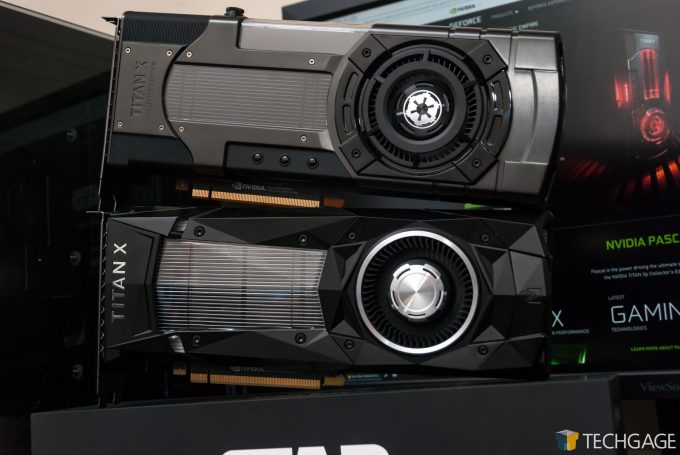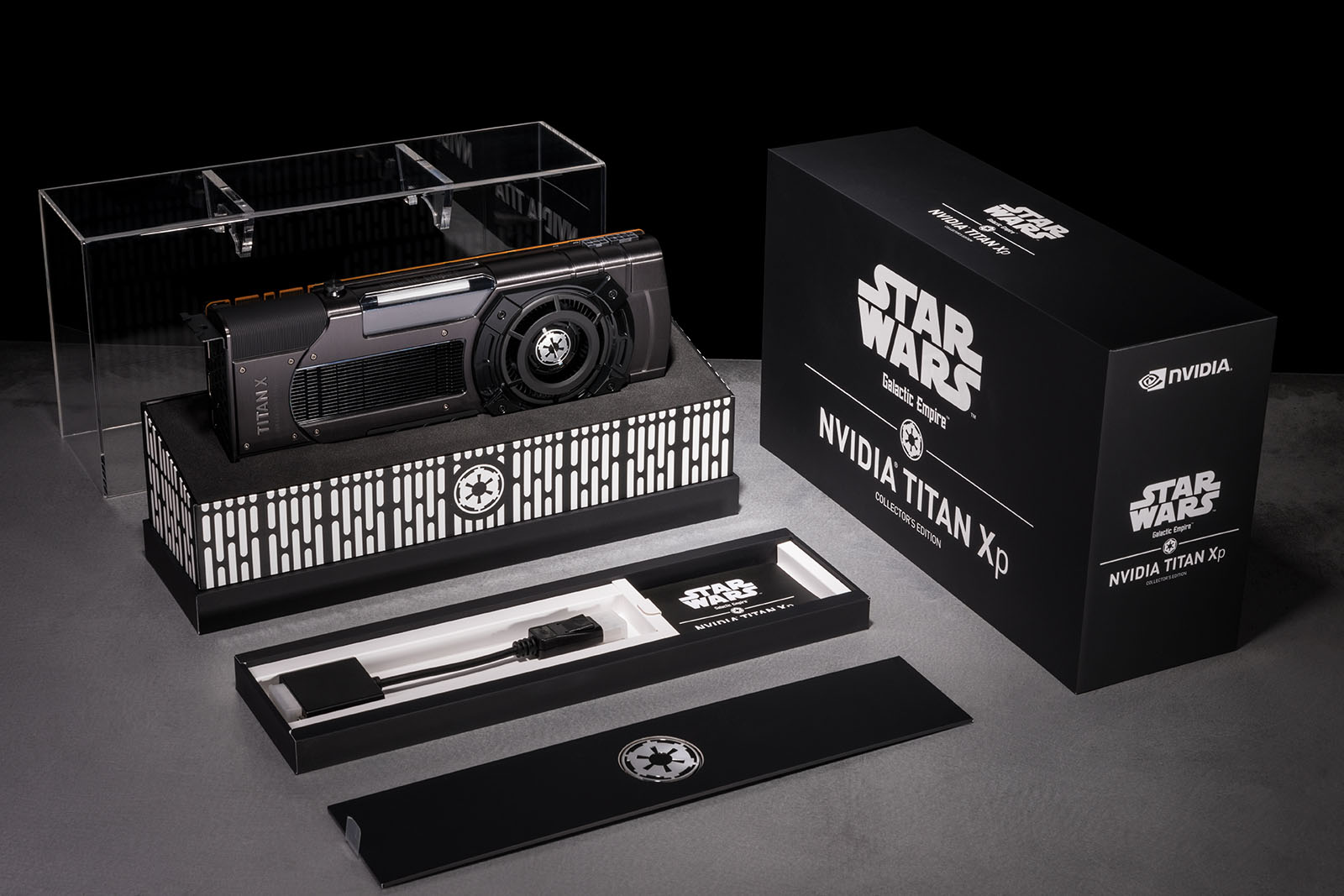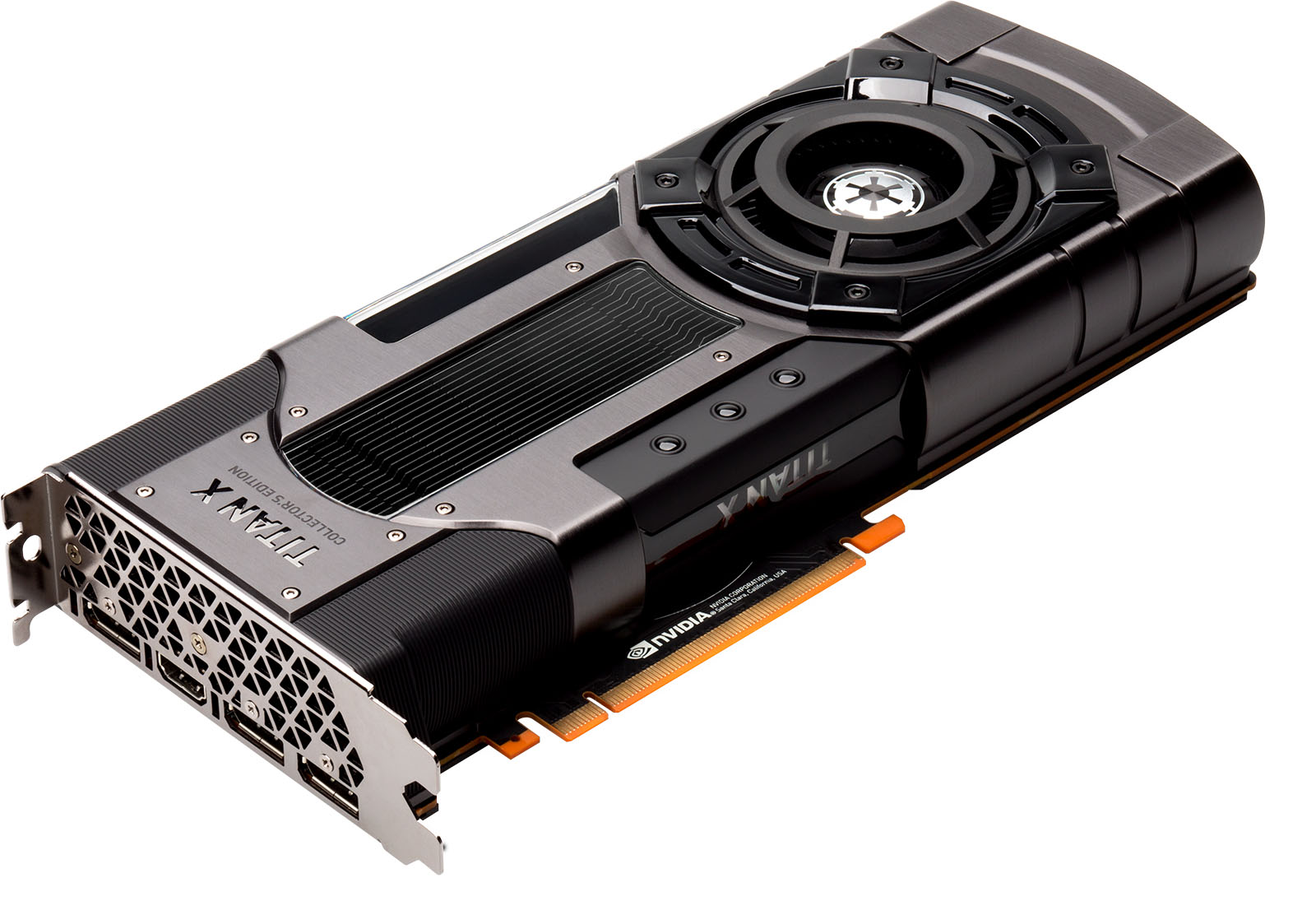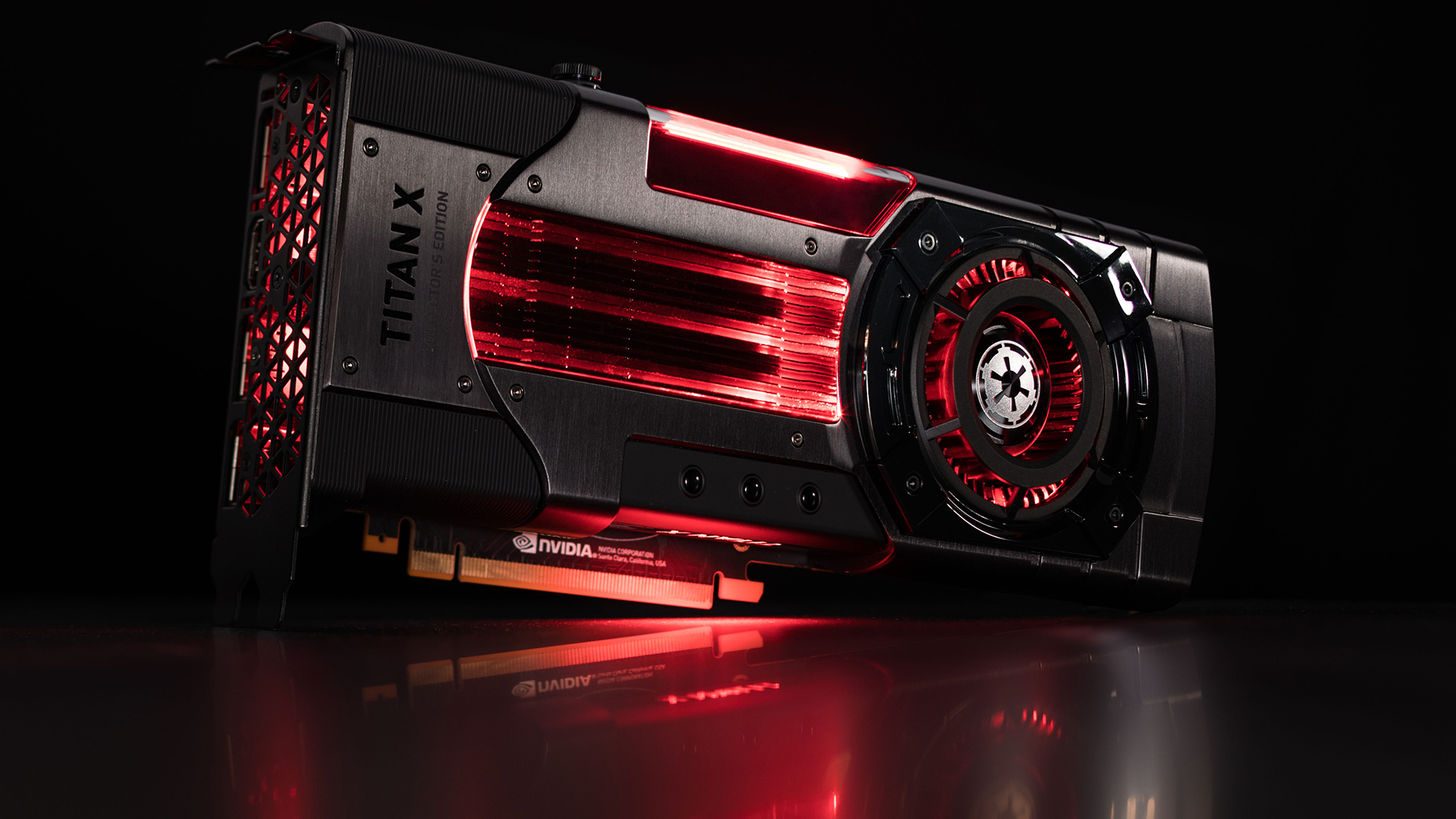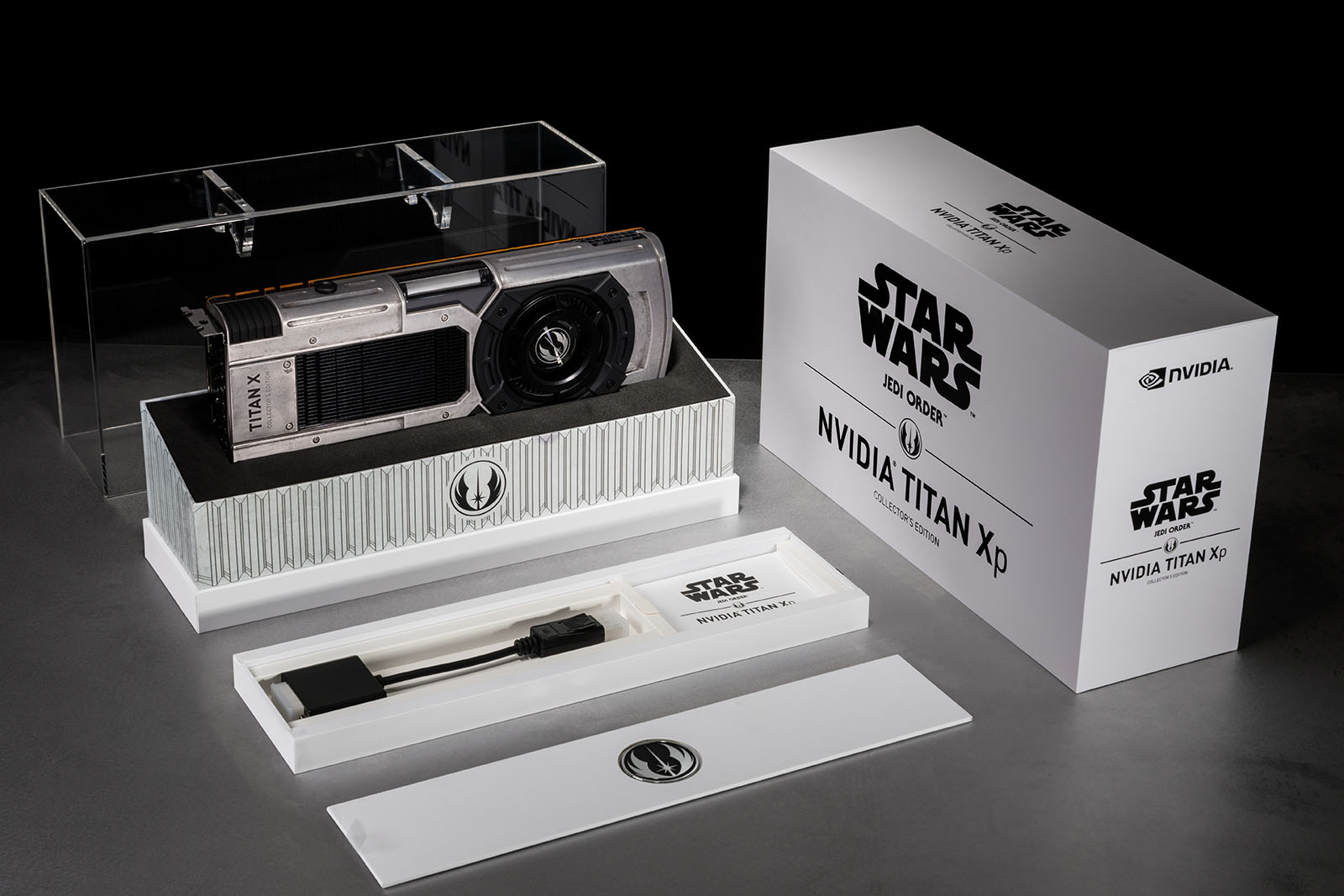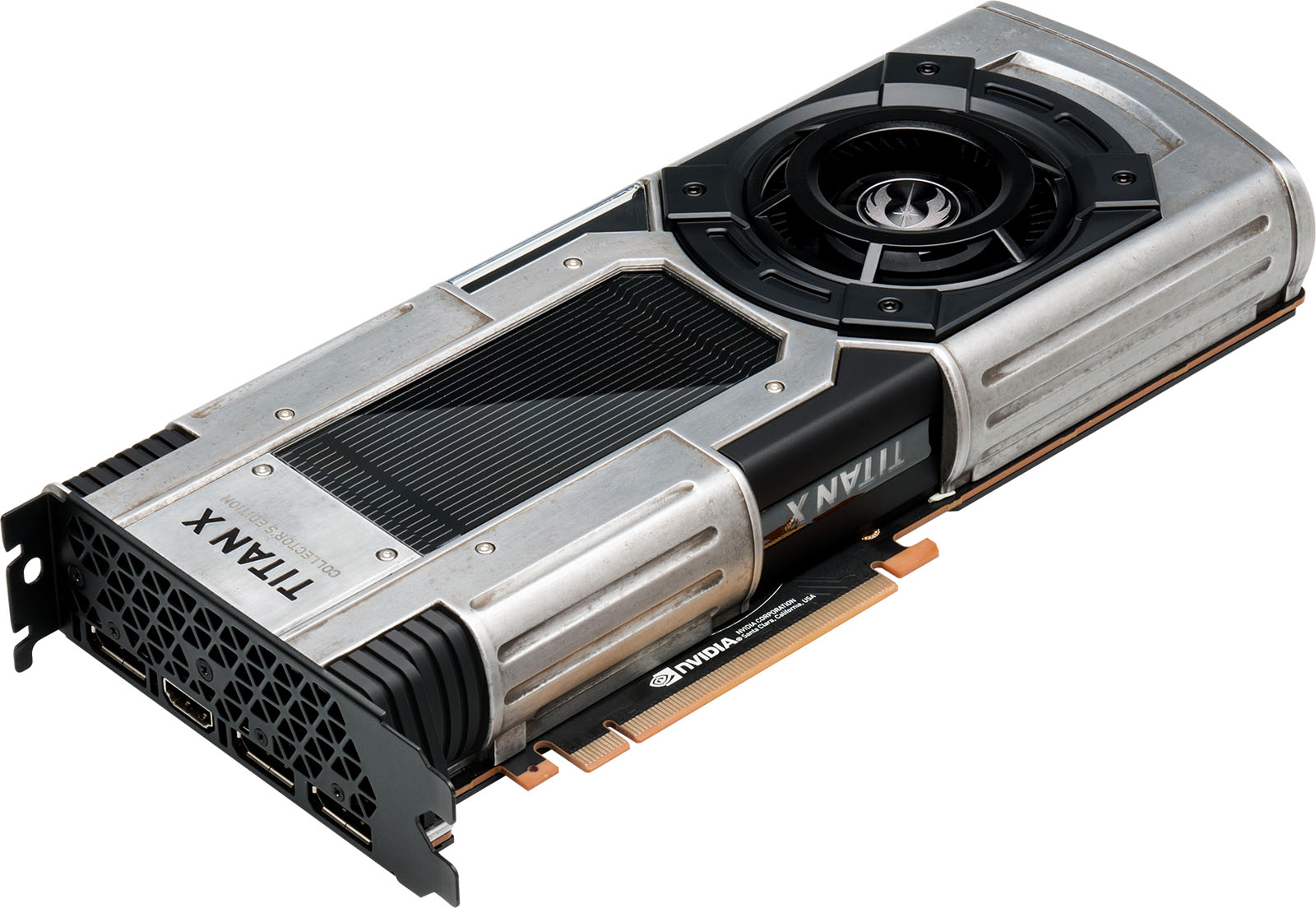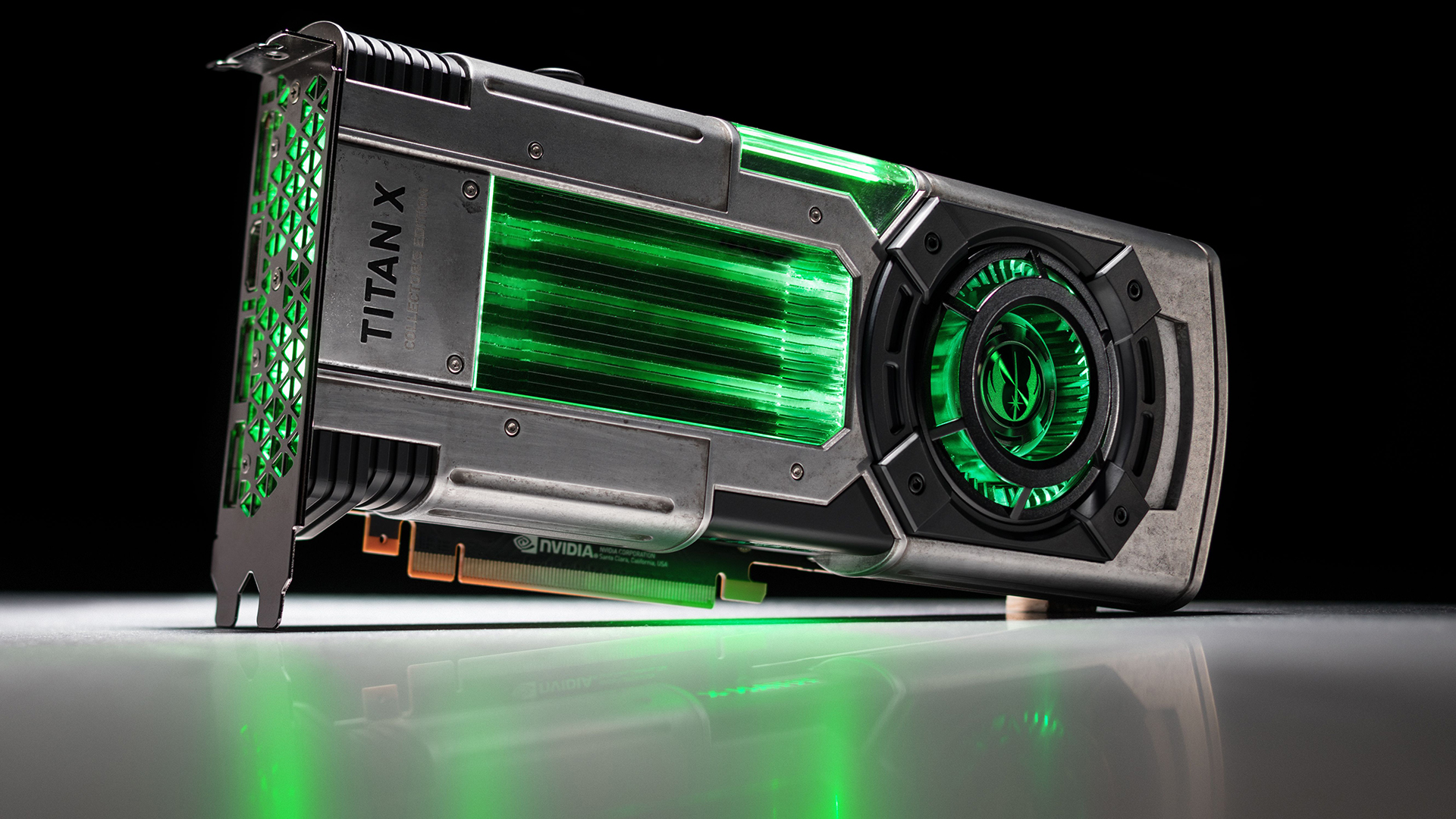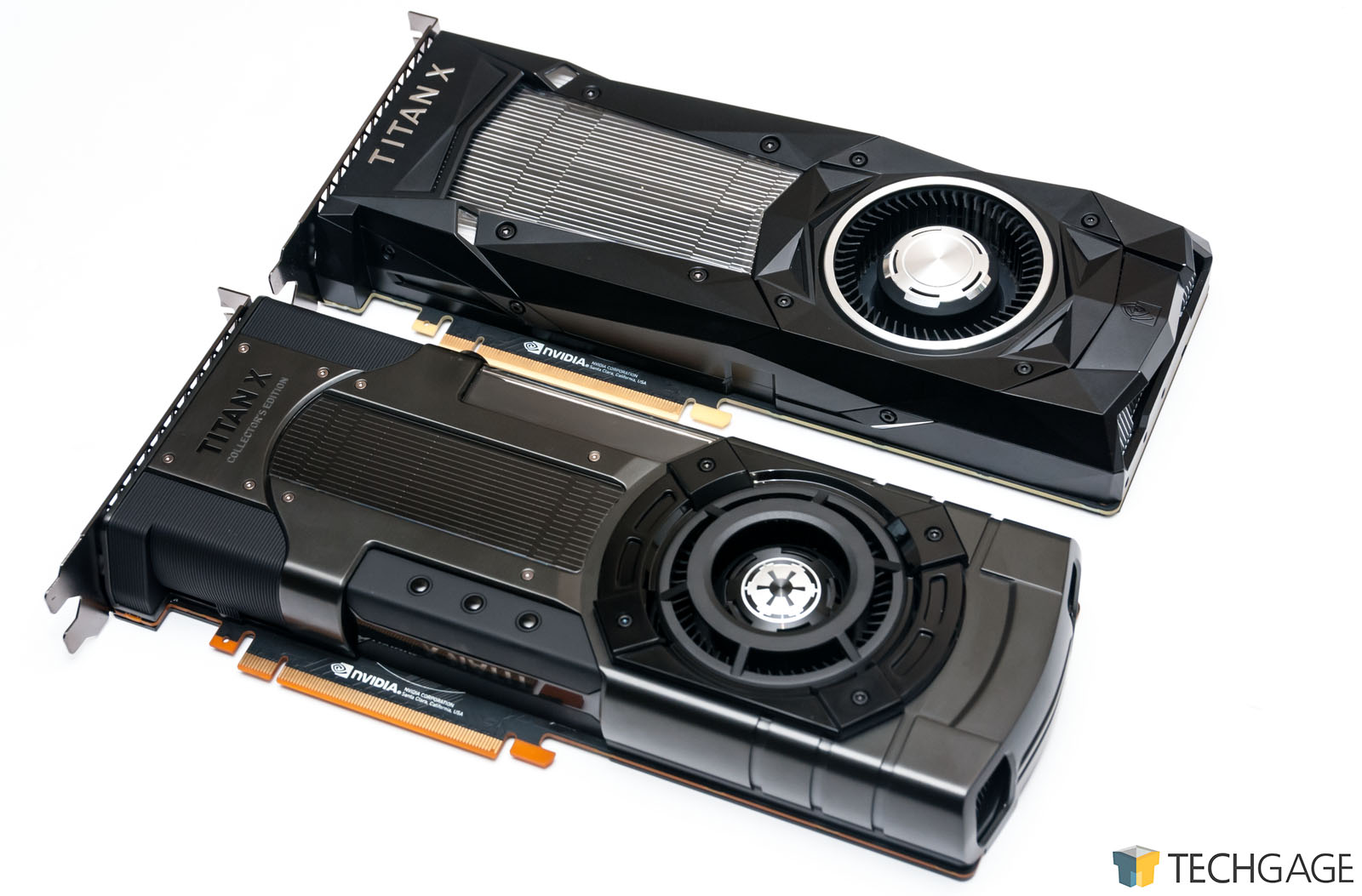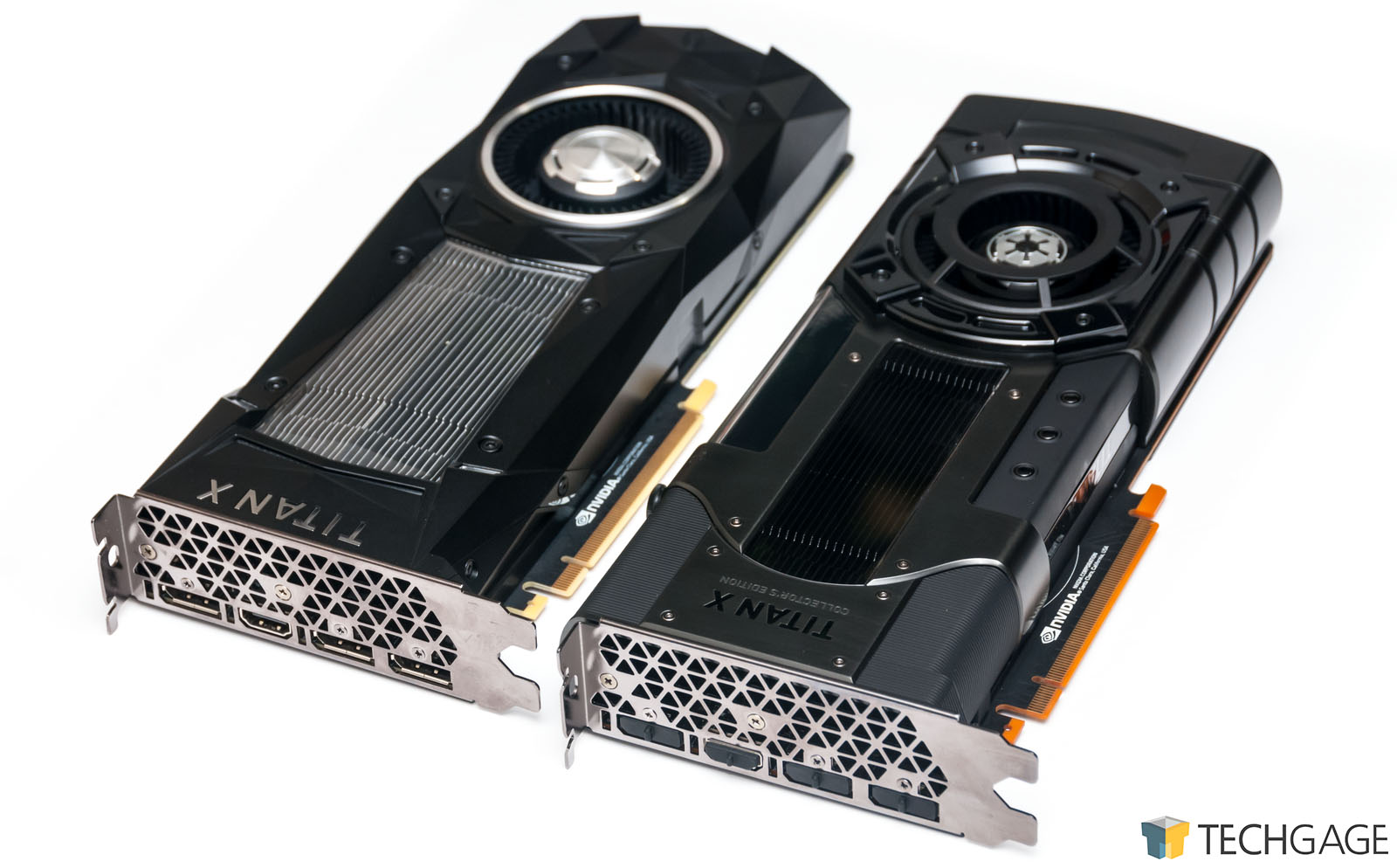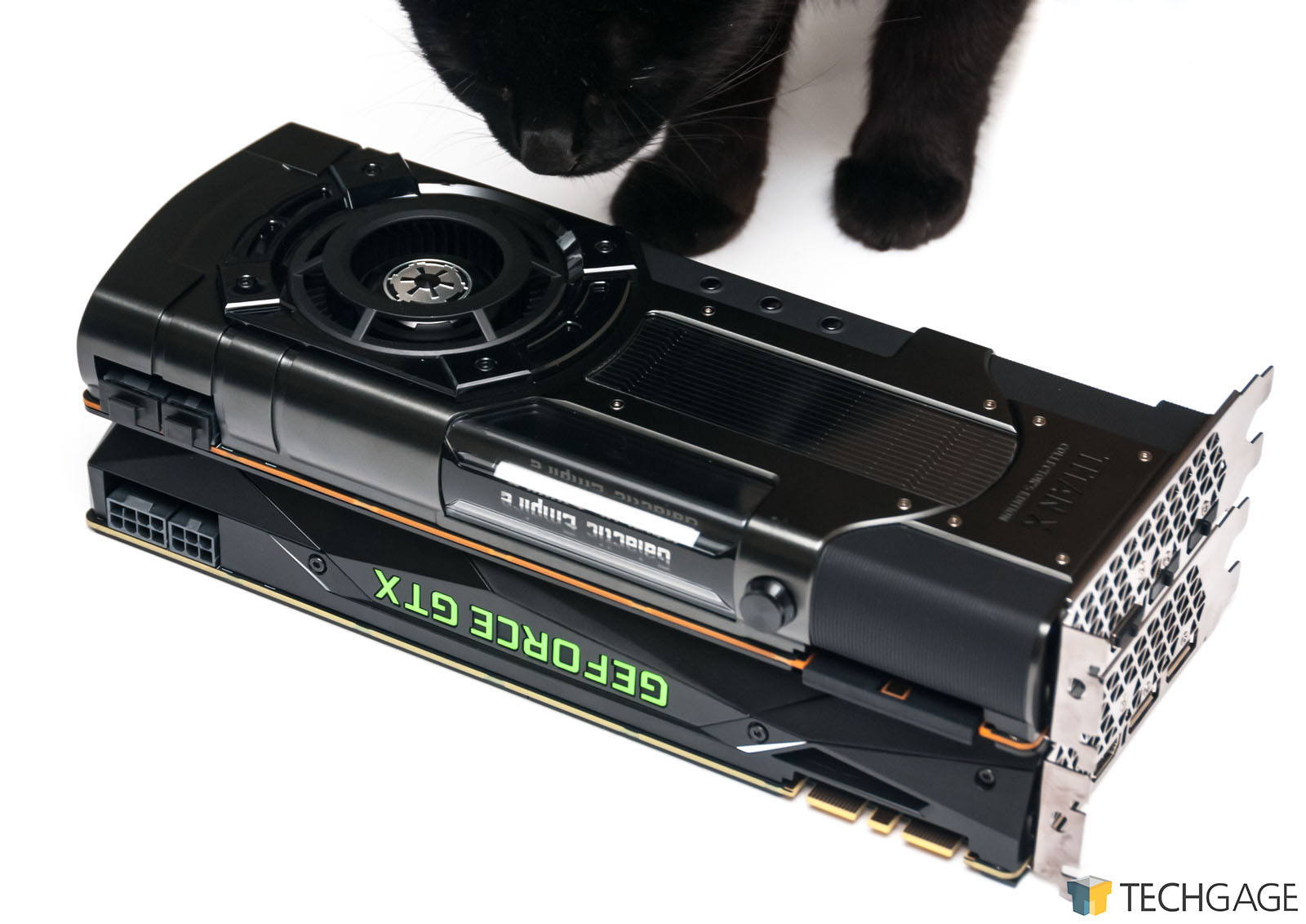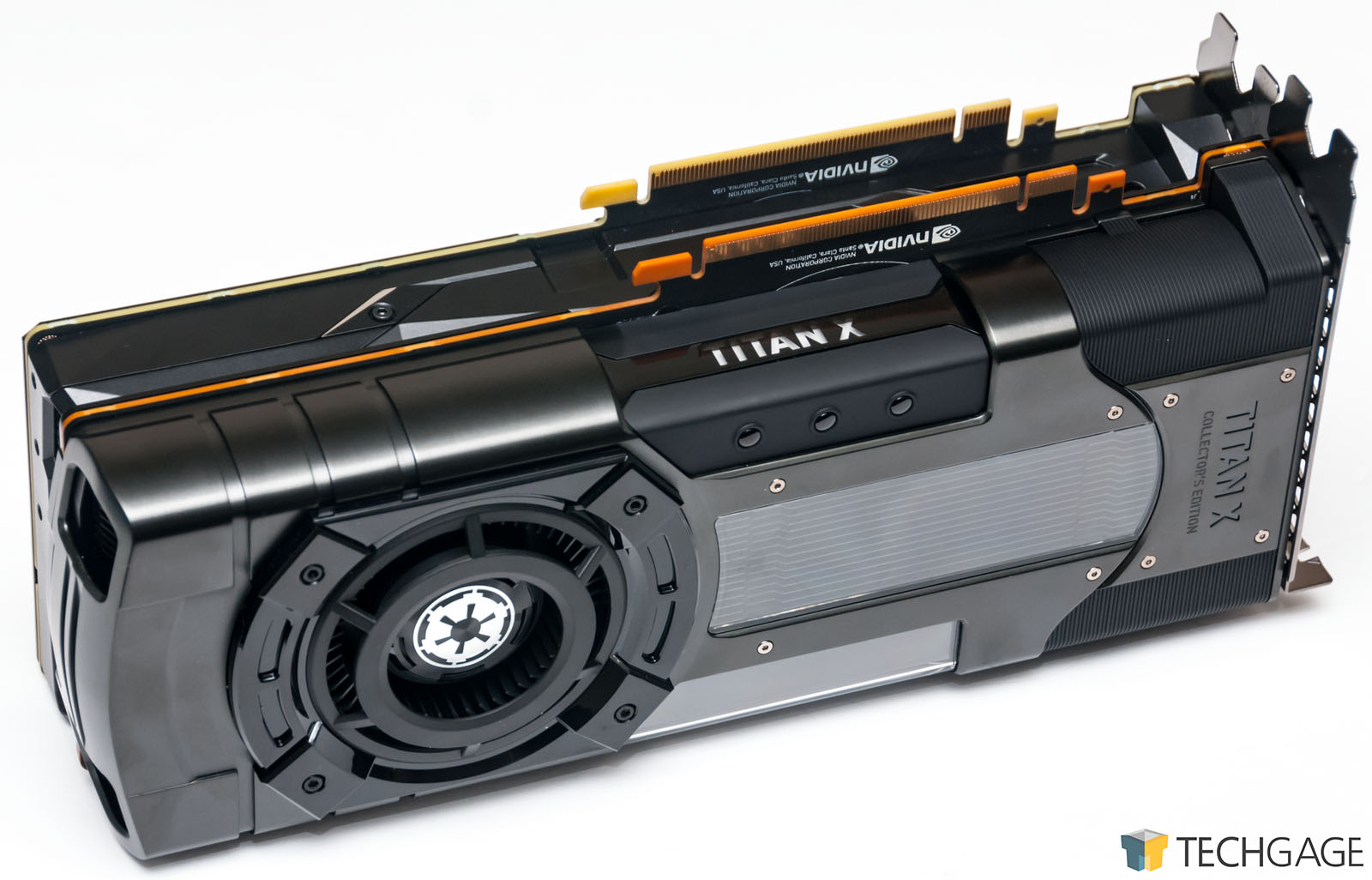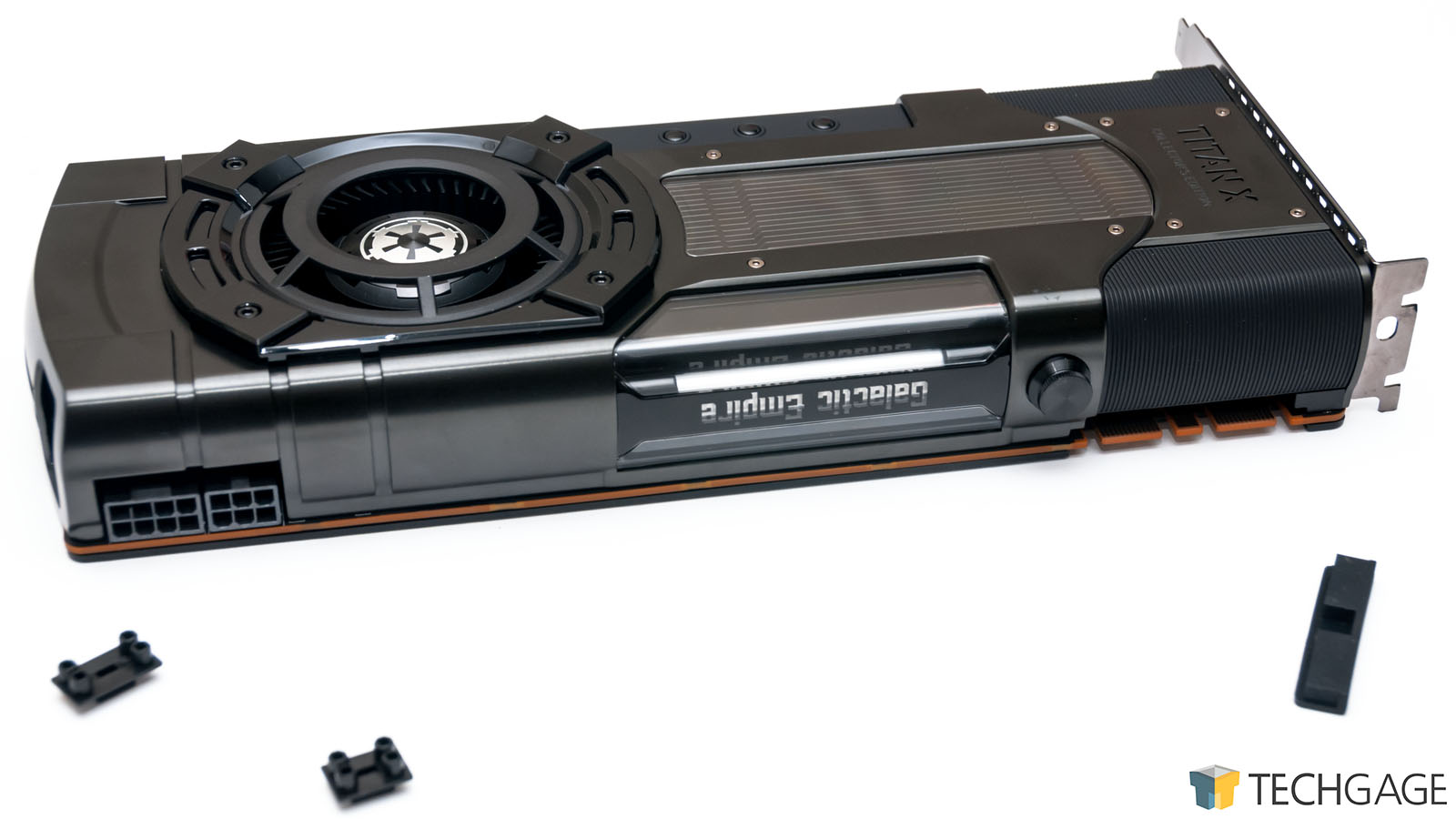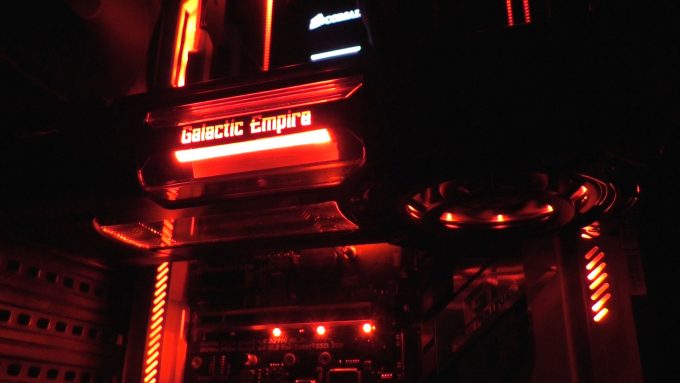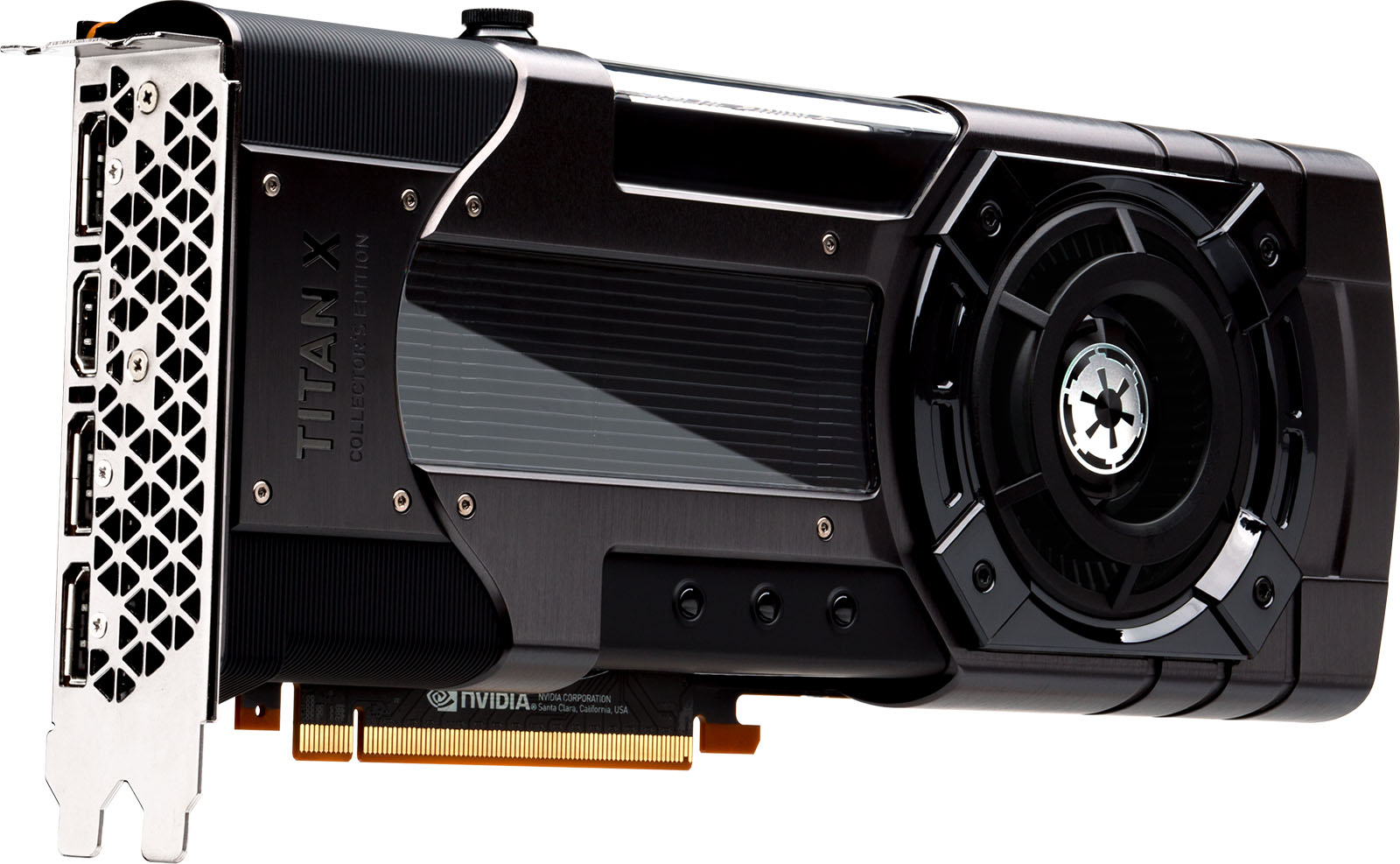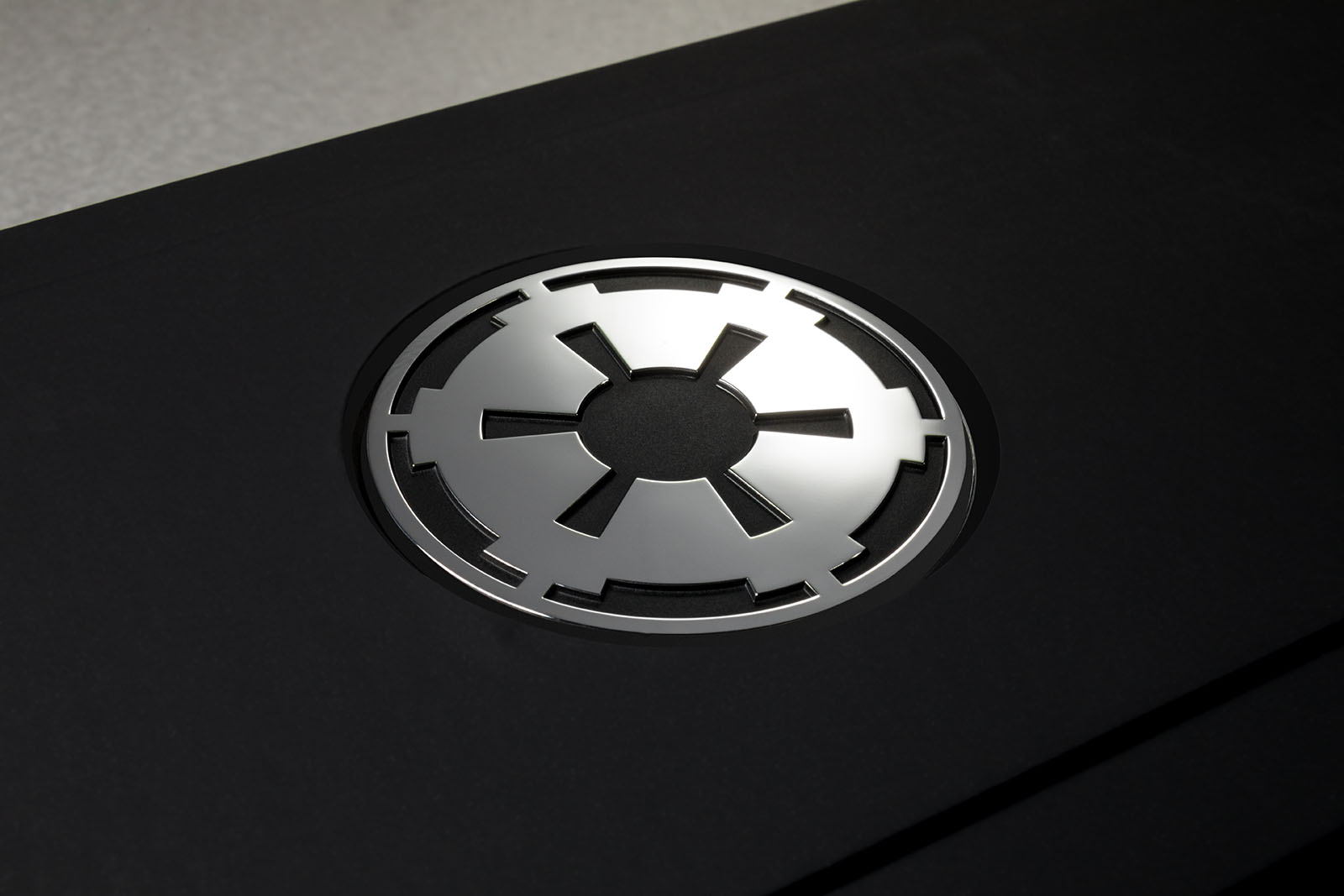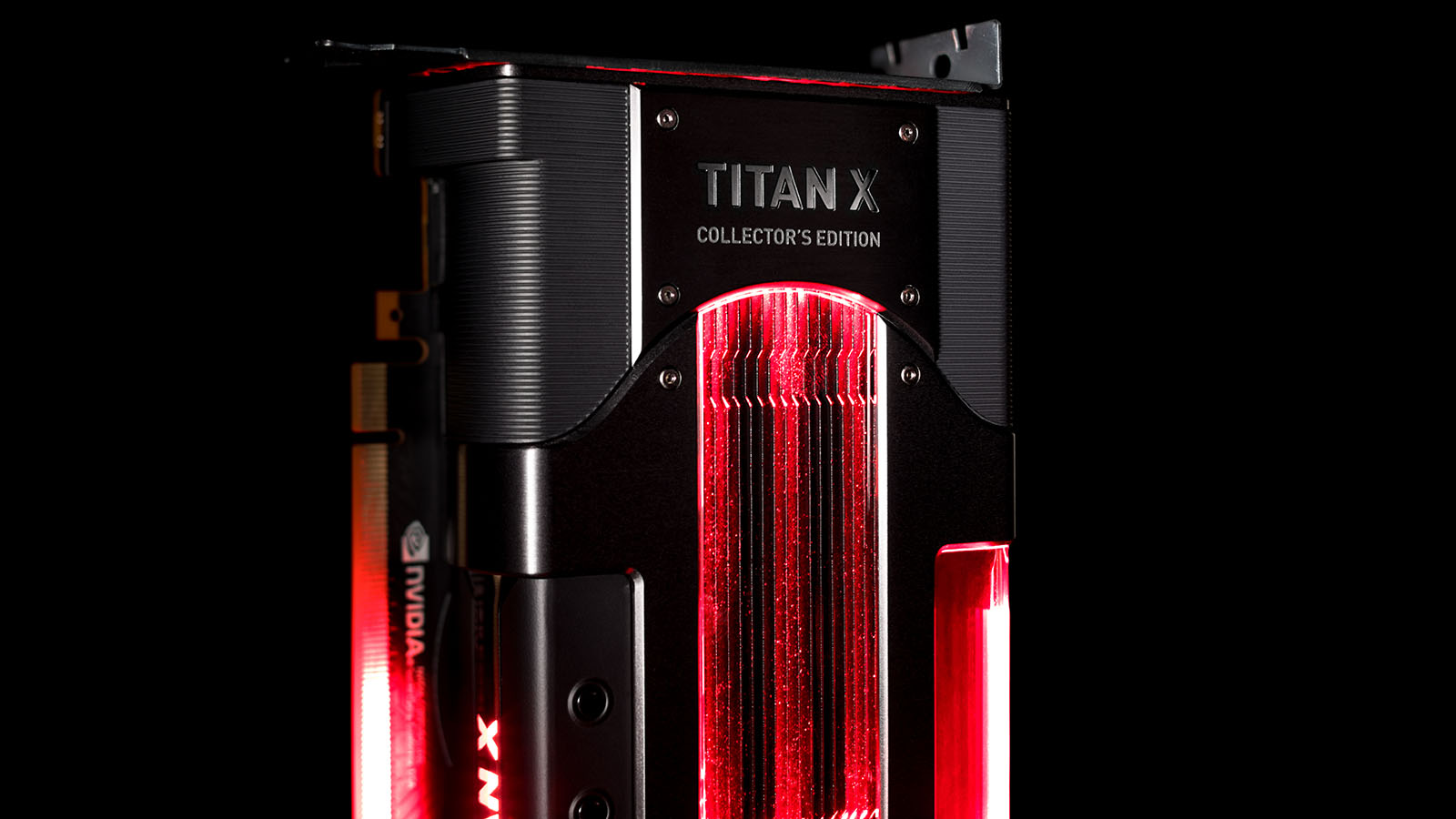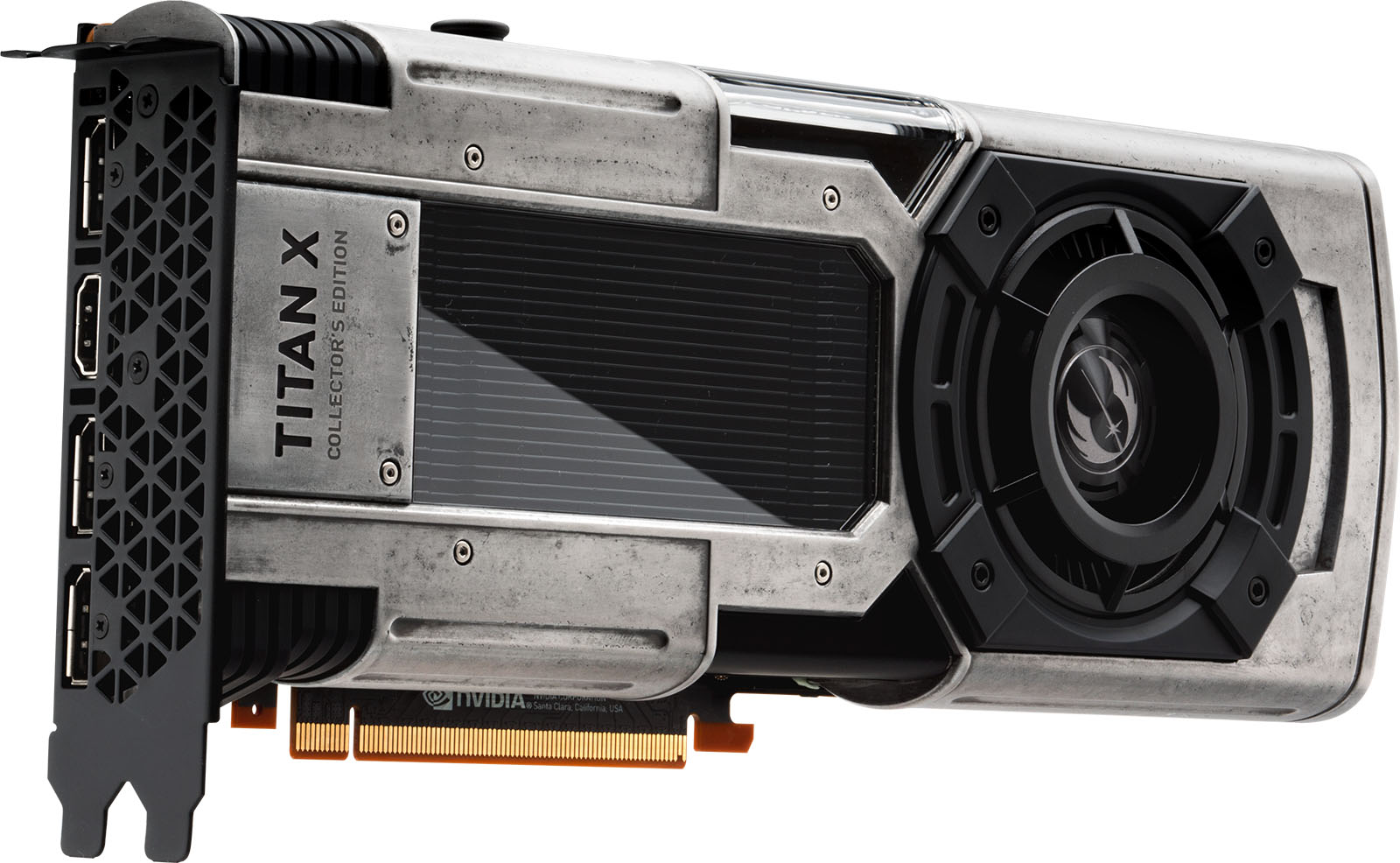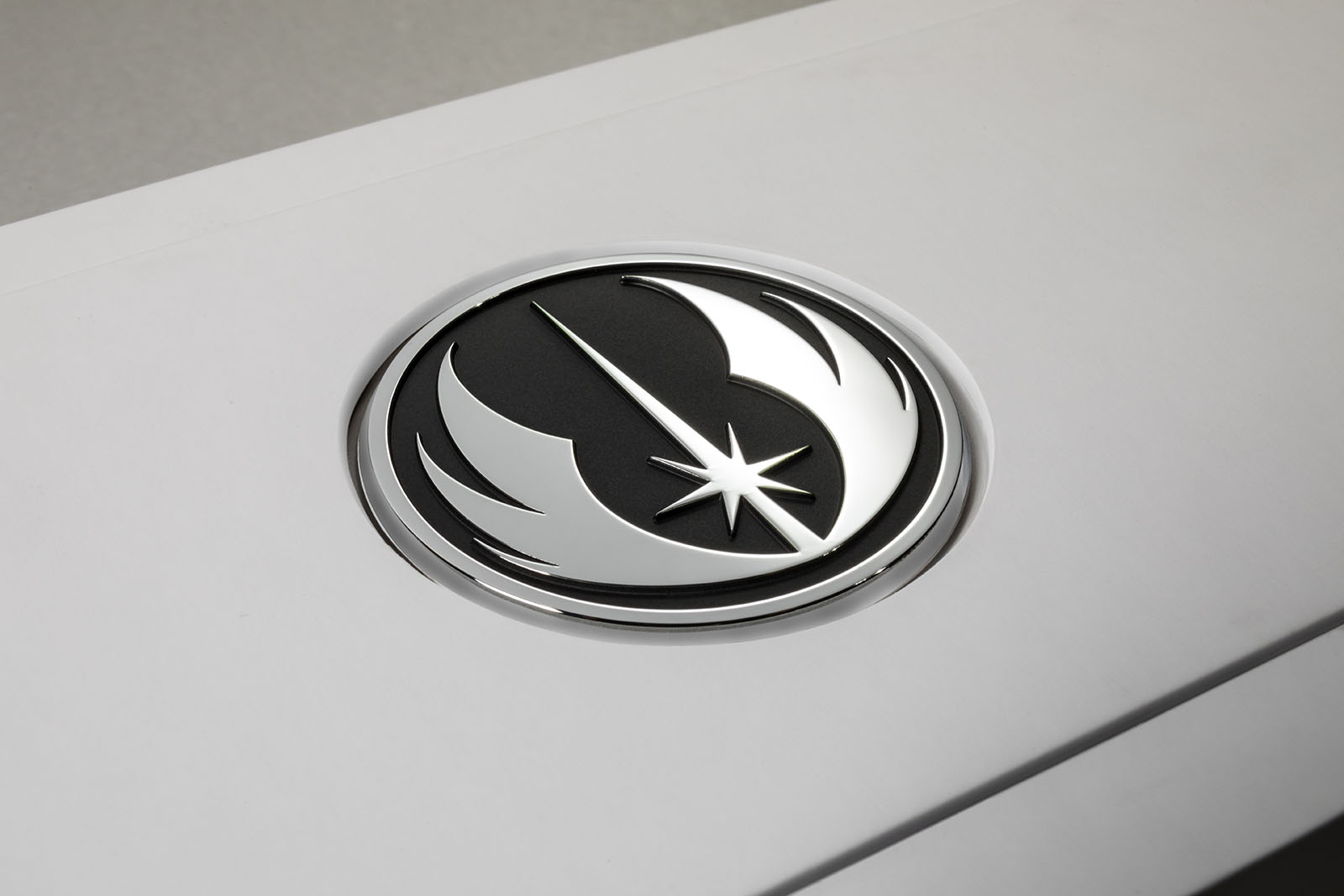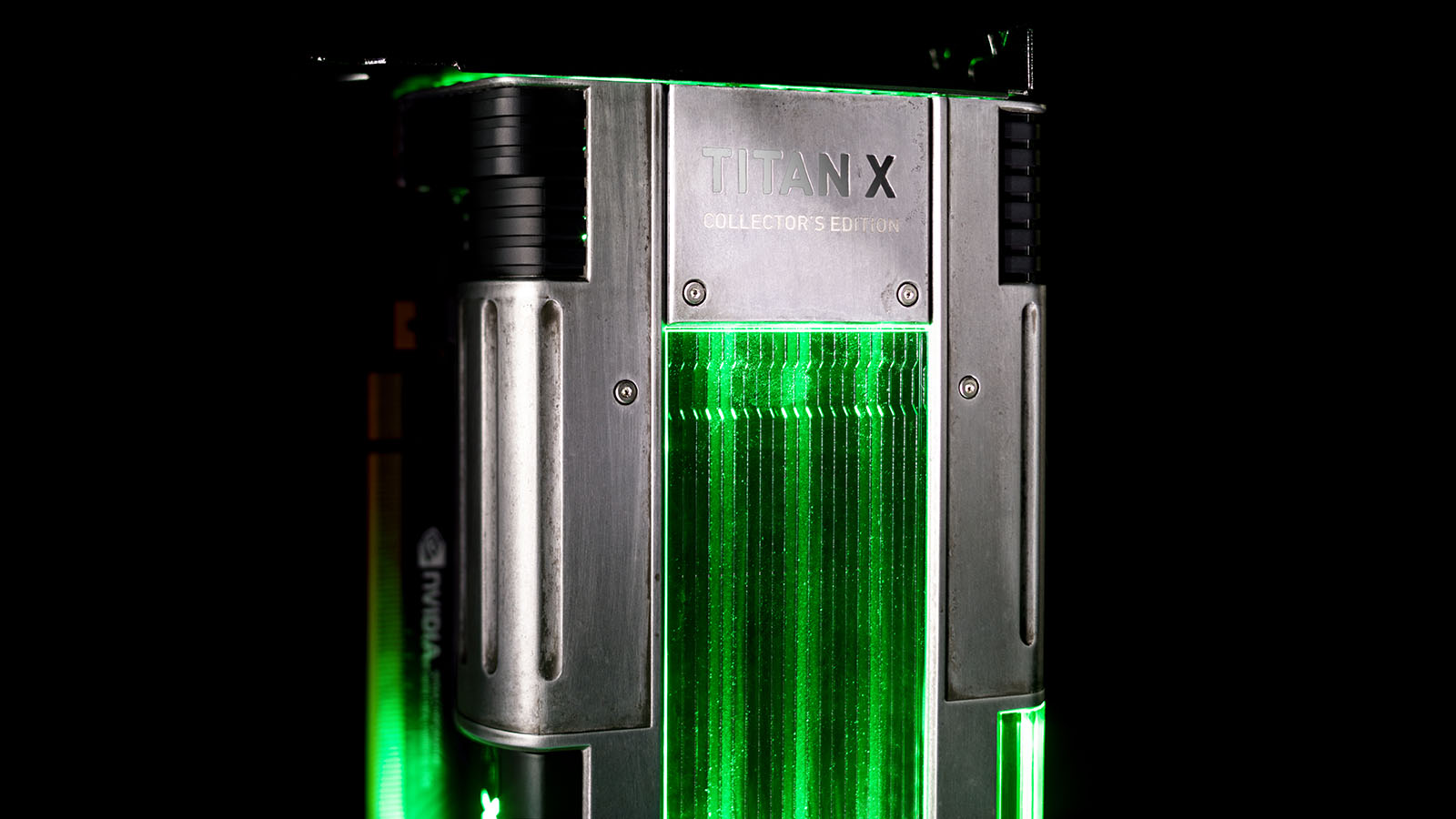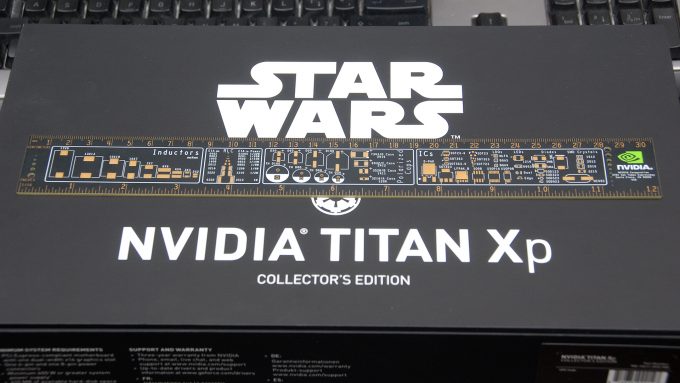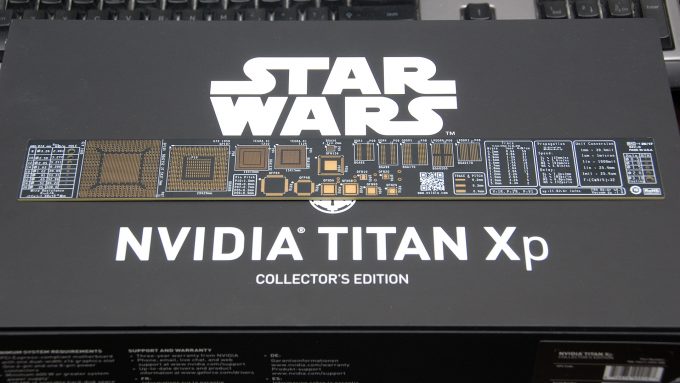- Qualcomm Launches Snapdragon 4 Gen 2 Mobile Platform
- AMD Launches Ryzen PRO 7000 Series Mobile & Desktop Platform
- Intel Launches Sleek Single-Slot Arc Pro A60 Workstation Graphics Card
- NVIDIA Announces Latest Ada Lovelace Additions: GeForce RTX 4060 Ti & RTX 4060
- Maxon Redshift With AMD Radeon GPU Rendering Support Now Available
Hands-on With NVIDIA’s TITAN Xp Star Wars ‘Galactic Edition’ Graphics Card

After an entire week’s worth of anticipation, NVIDIA’s TITAN Xp Star Wars edition has landed. You could say that the TITAN Xp is a special graphics card already, but infuse some Light and Dark side flavor, and we get something special. We’re unboxing the Galactic Empire edition, suitable for only the most evil rulers.
Not long after NVIDIA launched its latest mid-range GPU, the GeForce GTX 1070 Ti, it began to tease another graphics card. Considering the fact that the 1070 Ti had a hard time squeezing into the overall GeForce lineup, it was mind-boggling to imagine that another card was en route. Well, as we learned not long after that, what we’re dealing with is a brand-new TITAN Xp that’s spec’d the same as the normal one. It just happens to be infused with some Star Wars flavor. Oh, and there’s two different models to choose from.
This release is an interesting one, because I don’t remember NVIDIA ever releasing hardware with this kind of franchise tie-in before. The company certainly isn’t a stranger to releasing merch, but $1,200 GPUs designed as an homage to an iconic series is a definite new one. And at that price, it’s going to be exclusive to some pretty die-hard fans.
In case I didn’t make it clear enough before, this brand-new TITAN Xp release is no different under-the-hood from the old one, at least in terms of performance. This Star Wars edition still has 3840 CUDA cores and 12GB of GDDR5X clocked at 11GHz. This edition isn’t going to OC better than the Founders Edition. It’s just meant to be a cooler looking TITAN Xp. And NVIDIA has succeeded.
The result is actually pretty stunning. On one side, we have the Light side, or Jedi Order edition. This card sports a gray shroud that’s meant to represent a rough existence. Conversely, the Galactic Empire edition looks premium, painted with a luxurious aesthetic; glossy, clean, and bold.
Both cards represent the hilt of a Lightsaber, which is probably obvious. On the Jedi Order version, a green LED bleeds through the top, bottom, and front, whereas the “Dark Side” (little jab at AMD here) has light in the same places, but it’s an evil red, instead.
As you can see from all of the shots here, NVIDIA’s done a pretty damn good job with the design of these GPUs. Each has their own flavor, although I admit I am partial to the Dark Side version, and not just because I’m evil. There’s something to be said about red on an NVIDIA card… that mere juxtaposition brings me joy.
Whereas the regular TITAN Xp is essentially cut from the same cloth as the 1080 Ti on the cooler front, NVIDIA went the extra mile with the design of these Star Wars editions. Rather than be placed at the top, a “TITAN X” logo graces the bottom, lit up, of course. Since that logo isn’t at the top, that area has been graced with either the Galactic Empire or Jedi Order logo (the former can be seen below).
I can’t tell for certain, but it seems there are no LEDs directly behind the fin array, but instead, the top and bottom LEDs will bleed through this area. You can get a feel for it in action with the shot above, which can actually be seen in action in the video version of this article (found at the top of this post, and at about the 5 minute mark).
Despite their awesome design, I found one design oddity that I can’t quite explain. While doing the “unboxing” for the video, I tried installing an SLI bridge on the card, only to find that the notch found beside the connector gets in the way. You can see an example here.
I’m thinking at this point that regular SLI bridges like these simply can’t be used – unless you have the odd configuration where a Founders Edition TITAN Xp acts as the bottom card. During a visit to NVIDIA last week, I was told that special SLI bridges would be en route, but I had assumed at the time that they were to complement the Star Wars theme, not negate an issue that other bridges would encounter.
This all said, I just wrote two paragraphs about SLIing $2,400 worth of GPUs together. To call this issue niche would be an understatement. Those looking for the best bang-for-the-buck with SLI would be better-served by the 1080 Ti, for just over half the price, with very close gaming performance, but no workstation optimizations.
Speaking of SLI… since we now have two TITAN Xp cards in the lab, SLI results will come in the near-future, along with results for the aforementioned 1080 Ti in SLI, as well.
There’s not much else I can say right now about this card, except that it looks amazing, and if you were already in the market for a TITAN Xp, then going with one of these editions feels like a no-brainer, simply because they look so good, and cost the exact same as the Founders Edition ($1,200 at NVIDIA’s webstore). Which version stands to be an actual collector’s edition down-the-road? I’d bet on Star Wars.
If you want a better look at the card, I’d recommend checking out the video version of this article. Otherwise, and before going, I want to force a little story on you, because I can’t imagine any other time soon where this would be appropriate to bring up.
I should note, at least at this point in early testing, the design of the shroud doesn’t impact temperatures – at least so far, so the card looks cool and remains as cool as the original TITAN Xp (which, to be honest, isn’t great).
When I was down in San Jose last week, I paid a visit to NVIDIA to check out its new HQ, and before leaving, I decided to hit up the gift shop. I’ve seen this simple black mug (green on the inside) at the past couple of GTCs, but I finally decided to pick one up during this opportunity, since I’ve finally decided to retire a mug my grandmother gave me after an obscene amount of coffee has passed through.
A mug is just a mug, though. What’s actually really neat was a ruler I stumbled on. Yup, a ruler. But just look at it! When’s the last time you used any sort of measuring device that was littered with so much cool information?
At the front, we can see a slew of inductors, caps, and ICs, and at the back, we see the chip layouts for common components, such as DDR4 and GDDR5. There’s even a comparison between the GTX 1080 and 1050. There are also holes on either side of the ruler that help you appreciate just how small some of these pins can get.
The reason I bring this ruler up is that 1) I regret not buying a whack of them, and 2) they’re eventually going to be sold by NVIDIA on its webstore. No timeline was given, but I’m hoping it’d be before the holidays, since products like these would make great stocking stuffers.
So there we have it. I’m wrapping up my look at a $1,200 graphics card with a look at a ruler that cost me a few dollars. I swear there’s a method to my madness, I’m just not sure what it is. [Ed: Rob, ruler of Techgage, just wanted to set some ground rules on puns… I obliged – Jamie].
Support our efforts! With ad revenue at an all-time low for written websites, we're relying more than ever on reader support to help us continue putting so much effort into this type of content. You can support us by becoming a Patron, or by using our Amazon shopping affiliate links listed through our articles. Thanks for your support!




